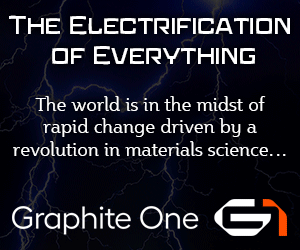Remarkably consistent Eureka Zone nickel
North of 60 Mining News - October 30, 2023
Last updated 11/16/2023 at 2:25pm

Shane Lasley for Data Mine North
Core from EZ-23-005, a Eureka Zone drill hole that cut 356.2 meters averaging 0.22% nickel, 0.08% copper, 0.02% cobalt, 0.122 g/t palladium, 0.057 g/t platinum, and 0.014 g/t gold.
Assays from first four holes return 0.34% Ni-eq over 300-meter widths.
Alaska Energy Metals Corp. Oct. 30 reported that assays from two more holes at Nikolai further confirm the remarkable consistency of the disseminated nickel sulfides in the roughly 300-meter-thick Eureka Zone that runs roughly 10 miles (16 kilometers) across this nickel-copper-cobalt-platinum group metals project about 55 miles south of Delta Junction, Alaska.
The nickel-enriched Eureka Zone at Nikolai has been known about since the 1990s discovery by an INCO Ltd. geological team led by the now Alaska Energy Metals President and CEO Greg Beischer. At the time, though, INCO was more interested in finding massive sulfide deposits that carry higher nickel grades. However, much like very large but lower-grade porphyry deposits have become the major source of copper, large bodies of disseminated nickel such as is being outlined at Eureka Zone are becoming an increasingly important source of the nickel needed for the lithium-ion batteries powering electric vehicles and storing renewable energy.
Assay results from the first four of eight holes drilled by Alaksa Energy Metals this year confirm encouragingly consistent nickel-copper-cobalt-PGM grades over wide widths.
In mid-October, the company reported assays from the first two holes of the 2023 drill program. Highlights include:
• 341.6 meters averaging 0.23% nickel, 0.08% copper, 0.02% cobalt, 0.107 grams per metric ton palladium, 0.051 g/t platinum, and 0.011 g/t gold in hole EZ-23-001.
• 296.6 meters averaging 0.23% nickel, 0.09% copper, 0.02% cobalt, 0.115 g/t palladium, 0.052 g/t platinum, and 0.013 g/t gold in hole EZ-23-002.
These two holes with very similar mineralization were collared roughly 300 meters apart.
Assays from the third and fifth holes drilled this year cut nearly identical mineralization more than 250 meters from EZ-23-001. Highlights from the latest batch of assays from the 2023 program include:
• 324.6 meters averaging 0.23% nickel, 0.08% copper, 0.02% cobalt, 0.119 g/t palladium, 0.053 g/t platinum, and 0.011 g/t gold in hole EZ-23-003.
• 356.2 meters averaging 0.22% nickel, 0.08% copper, 0.02% cobalt, 0.122 g/t palladium, 0.057 g/t platinum, and 0.014 g/t gold in hole EZ-23-005.
EZ-23-003 and EZ-23-005 were drilled approximately 250 meters southeast and 300 meters northwest of EZ-23-001, respectively.
"With our grid-pattern drilling at 300-meter centers, we are quickly blocking out a large tonnage of rock mineralized with nickel and other related metals," said Beischer. "The current grid-drilled strike extent is approximately 600 meters, with an estimated true width of around 300 meters."
The mineralization being drilled this year is also matching up well with holes Pure Nickel Inc. drilled in this area a little over a decade ago.
Some of these historical drill intercepts include:
• 319.7 meters averaging 0.25% nickel, 0.09% copper, 0.018% cobalt, 0.117 g/t platinum, 0.054 g/t palladium, and 0.013 g/t gold in hole PNI-10-0036.
• 205.2 meters averaging 0.24% nickel, 0.09% copper, 0.017% cobalt, 0.122 g/t palladium, 0.061 g/t platinum, and 0.019 g/t gold in hole PNI-13-069.
These two historical holes and the four holes reported so far by Alaska Energy Metals cover a roughly 1,000-meter-long stretch of the Eureka Zone.
The balance of the 2023 holes and other historical holes are expected to provide enough drill density for an inaugural resource calculation for a portion of the Eureka Zone.
"The Eureka Zone of the Nikolai project in central Alaska is proving to be every bit as persistent, consistent, and homogeneous as indicated by the historical drilling on the property," the Alaska Energy Metals CEO added. "Once we receive assay results from the remaining four holes of the 2023 program our intention is to publish an inferred resource calculation."
It is estimated that a roughly 2,500-meter core section of Eureka Zone hosts somewhere between 475 million to 630 million metric tons of disseminated sulfides with 2.1 billion to 2.8 billion pounds of nickel, 697 million to 925 million lb of copper, 189 million to 250 million lb of cobalt, 825,000 to 1.1 million ounces of platinum, and 1.8 million to 2.4 million oz of palladium.










Reader Comments(0)